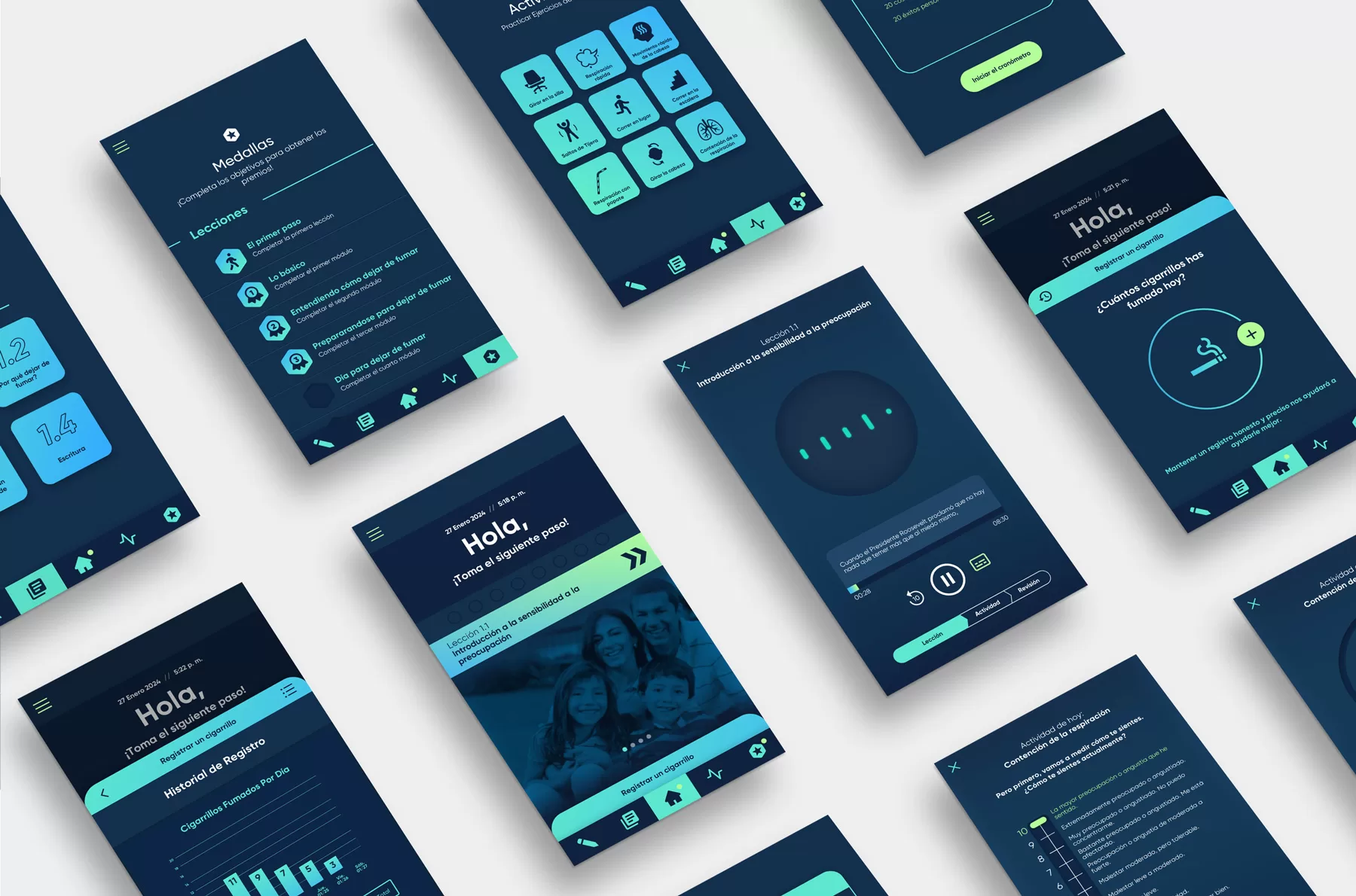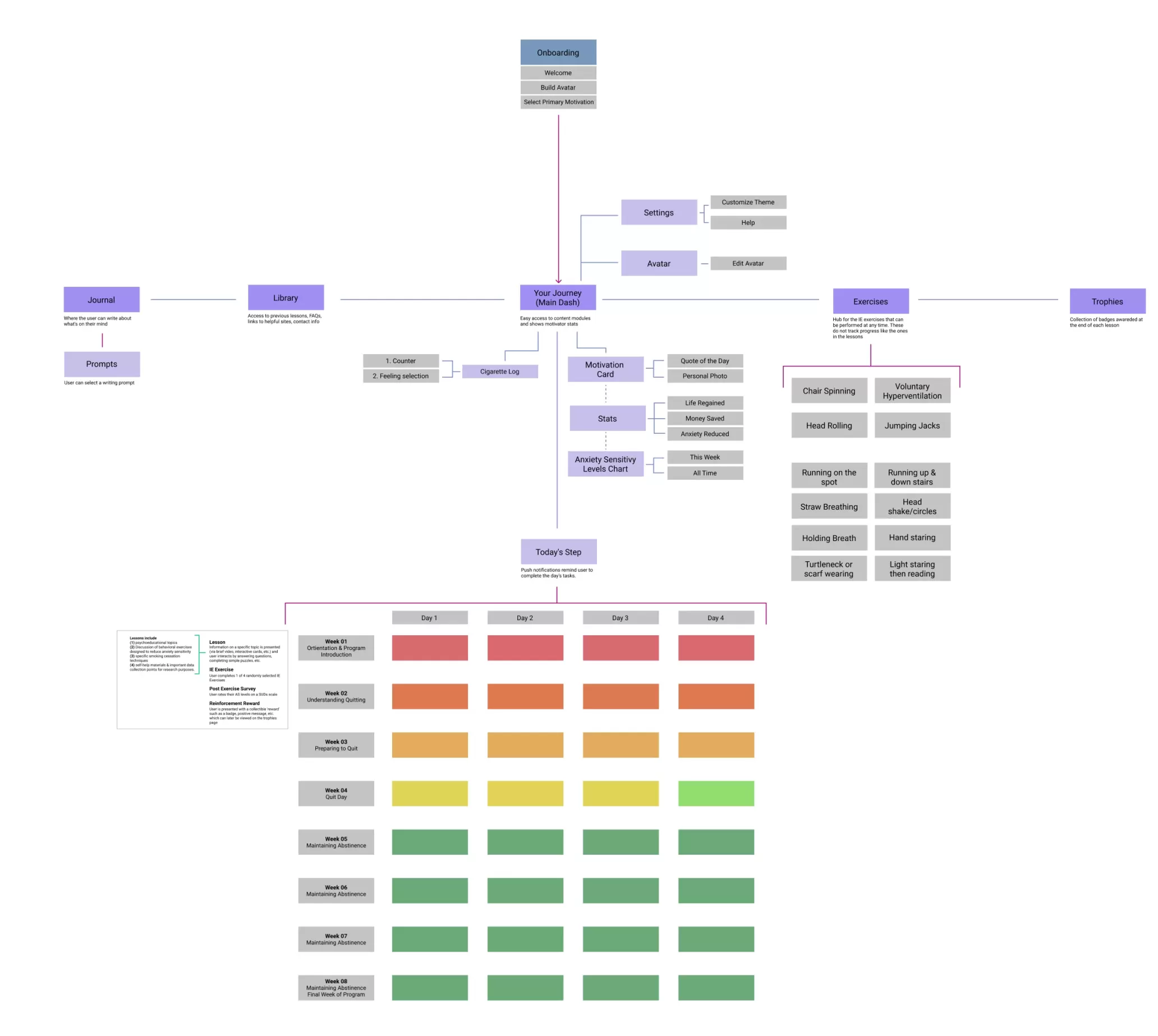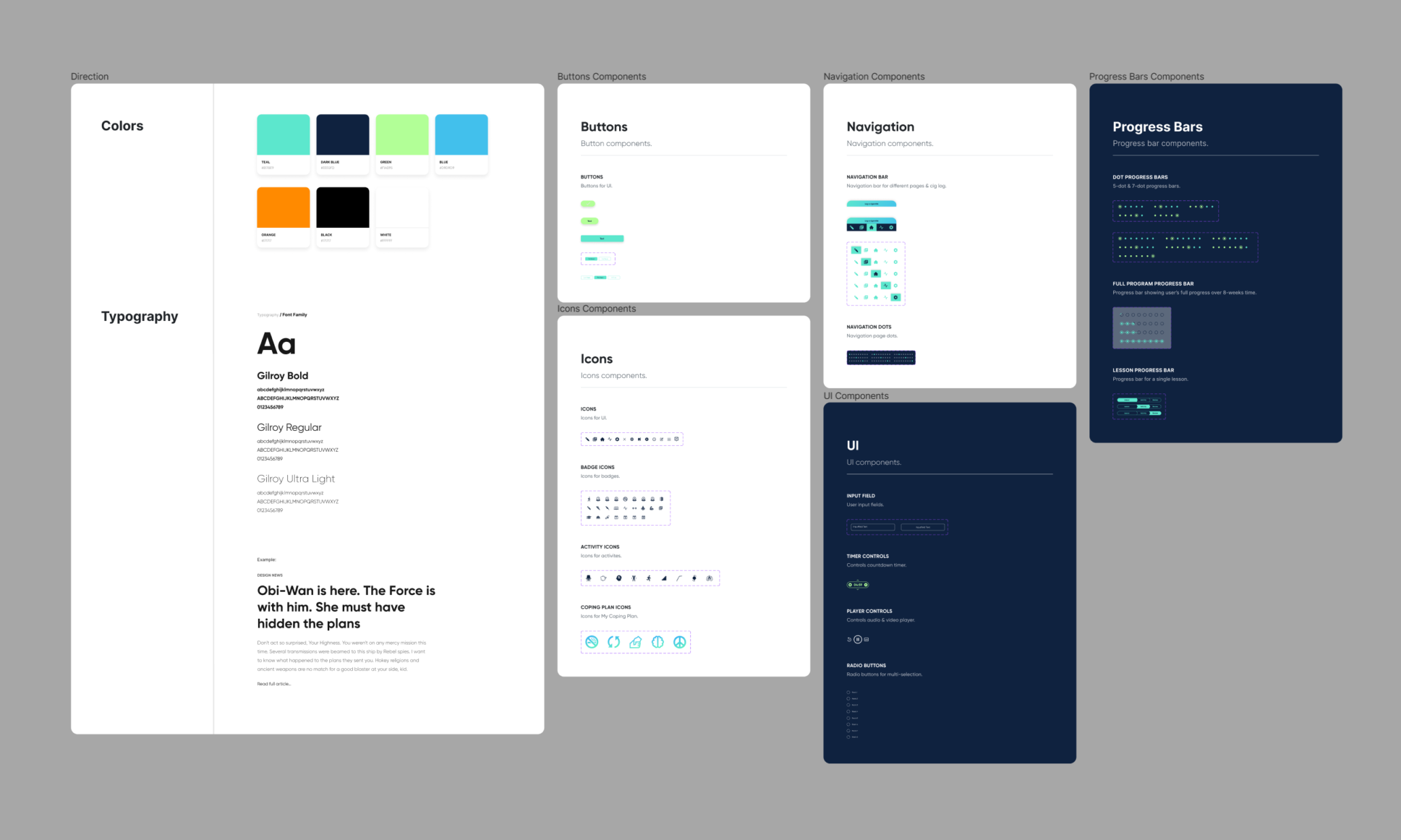Project Objective
We worked with Texas-based and NIH funded Health Behavior Solutions to design and develop an 8-week smoking cessation program aimed at the Latinx community. Our goal was to simultaneously improve mental health and smoking behavior by emphasizing the need to target smoking and anxiety sensitivity at the same time.
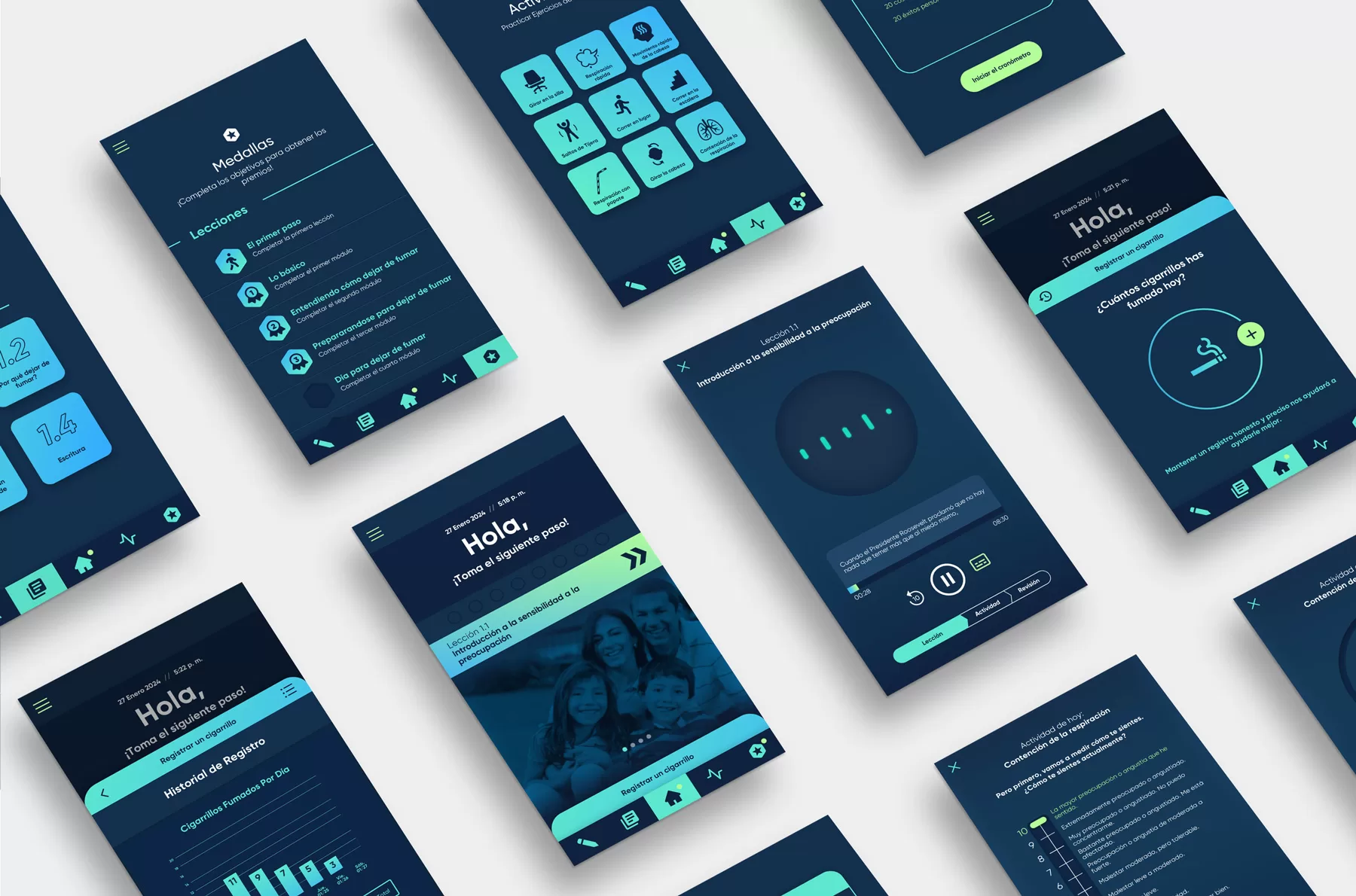
Challenge: Understanding and Connecting with the Latinx Community
How can we effectively create an app that connects with the Latinx community?
To answer this question, we committed a lot of time to researching our audience and determining who this app was for. Part of the team traveled to Houston, TX to interview a set of participants to truly understand what people are looking for in an app to quit smoking. Beyond just the look and feel of the app, the team took into consideration the style of communication, use of proper or improper Spanish, and whether content should be more relaxed or more structured.
We asked questions about peoples’ daily routines with the goal to make this app merge with their schedule and not be a pain. Quitting smoking is hard enough, so the last thing we wanted was to add ONE MORE thing to someone’s already busy life!
Research Approach
Methodology:
- Research Sprint: A 2-week intensive research period focused on understanding smoking addiction, cultural insights, and user needs.
- User Interviews: Conducted 5 in-person interviews at health clinics to understand user pain points, motivations, and app preferences.
- LATAM Expert Consultation: Gathered demographic and cultural context from a Latin American specialist.
- Affinity Mapping: Classified and synthesized all insights to understand the priorities and design opportunities.
Key Findings:
- Motivations for Quitting: Health concerns, financial burden of smoking, and a desire to be better family role models were the primary motivators.
- Time Constraints: Users lead busy lives with multiple jobs and limited free time. They need an app that integrates seamlessly into their routines.
- Sense of Ownership: Users want to feel empowered to manage their quit journey and stay engaged with the app.
- Cultural Considerations: Limited access to in-person care and a stigma surrounding mental health support require a culturally sensitive approach.
Insights and Recommendations:
- Focus on Simple, Bite-Sized Content: Provide short, actionable steps and information accessible during brief breaks throughout the day.
- Gamification and Motivation: Implement gamification elements and motivational features like progress trackers, badges, and inspirational stories to keep users engaged.
- Community Building: Foster a sense of community through in-app forums or chat groups for peer support and encouragement.
- Culturally-Sensitive Design: Develop culturally relevant visuals and messaging that resonate with the Latin American community.
UX Design: Bridging Cultural Sensitivity with Seamless Interaction
In crafting the UX design for the smoking cessation app, our focus was on creating an experience that not only resonated with the Latinx community but also facilitated intuitive and effortless interaction. The family-centered approach dictated not only the content strategy but also influenced the app’s navigation and layout. The use of darker hues not only addressed potential eye strain concerns but also contributed to a calming and inviting visual atmosphere, aligning with the goal of improving mental well-being. Emphasis was placed on legibility and accessibility, accommodating users of varying ages and technological familiarity. User journeys were meticulously mapped to mirror daily routines, ensuring that participants could seamlessly integrate the app into their lives. The result is an aesthetically pleasing interface that fosters a sense of belonging and comfort, crucial elements in encouraging sustained engagement with the smoking cessation program. The UX design not only serves as a bridge between technology and culture but also enhances the overall effectiveness of the app by making it truly accessible and user-friendly for the Latinx community.
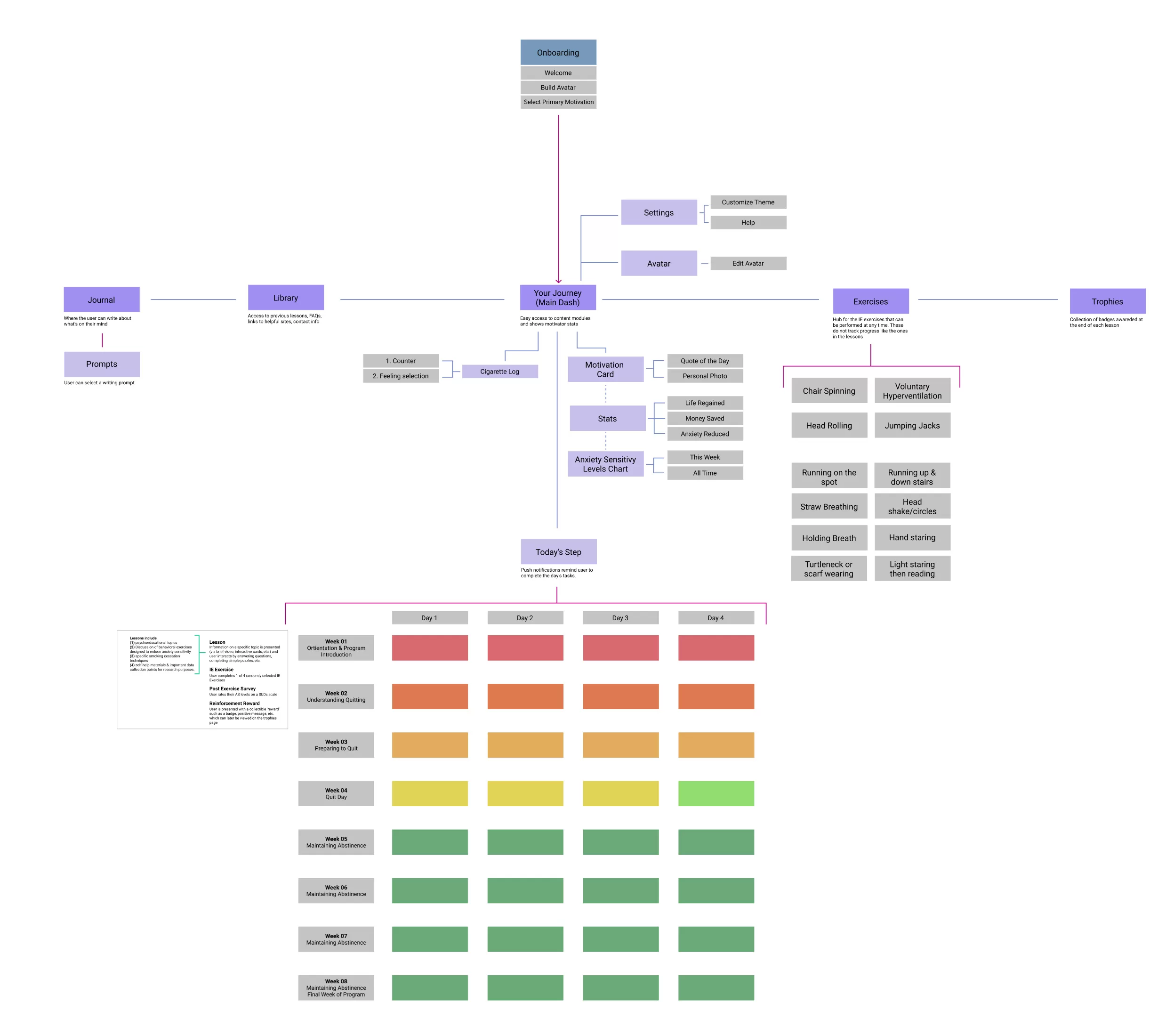

Content and Features: Creating an Interactive and Rewarding Program
Onboarding Questions: Personalization was key, achieved through onboarding questions that tailored the app to participants’ routines, providing personalized stats related to their habits.
Engagement Activities: Lessons included various activities like multiple choice questions and fill in the blanks, promoting active engagement. Practice exercises and journaling were integrated into the program to reinforce learning.
Record-Keeping and Data Features: Participants could track progress through record-keeping features, monitoring cigarettes smoked, money saved, and anxiety levels. Badges were awarded for completing lessons, exercises, and journaling, fostering a sense of accomplishment.
Notifications: To ensure adherence to the program, notifications were implemented, alerting participants of new lessons and prompting them to stay on track with exercises and journaling.
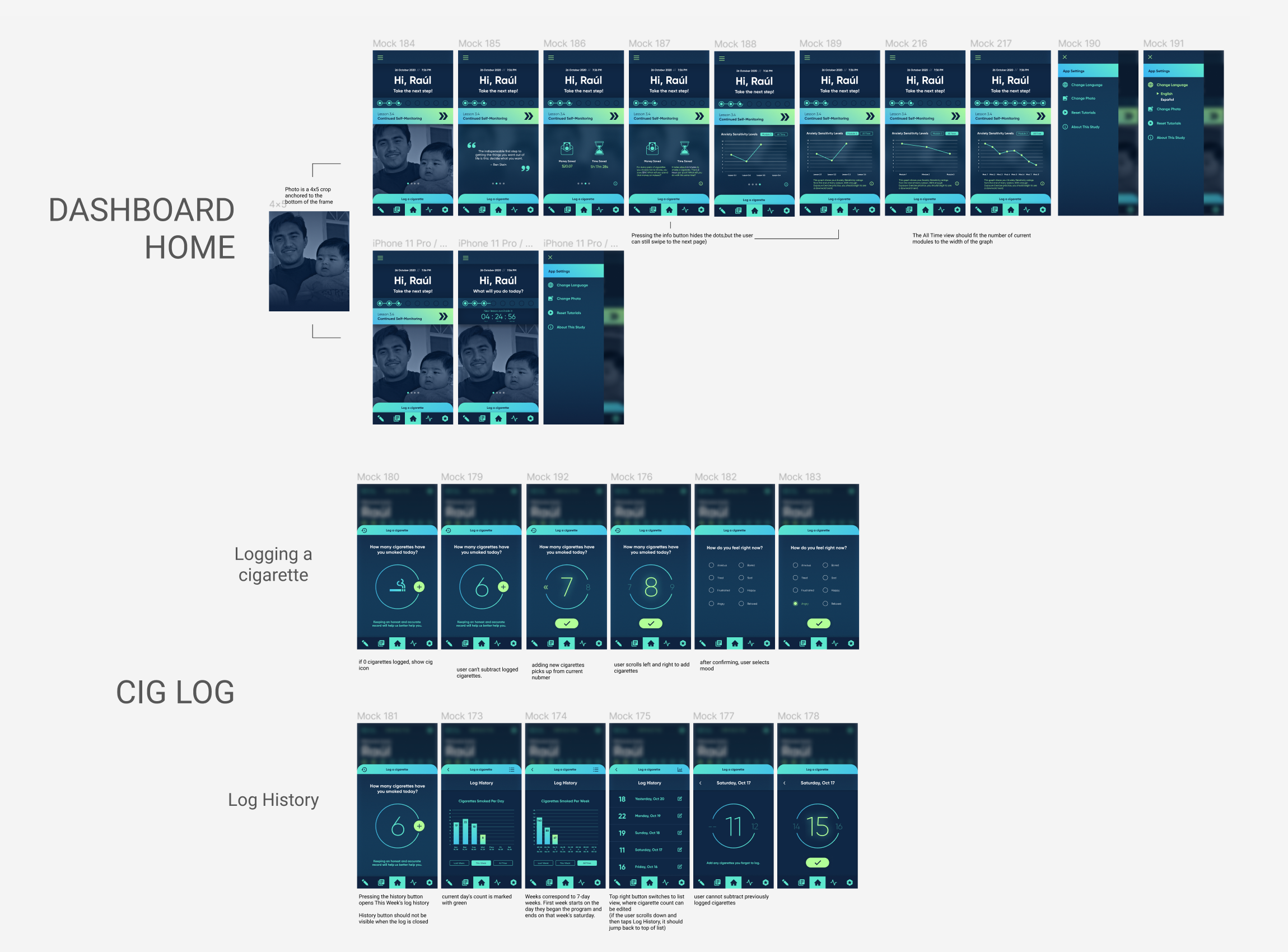
Outcome
The result is an app that not only addresses the challenge of quitting smoking but does so in a culturally sensitive manner, respecting the daily lives and preferences of the Latinx community. By combining personalized content, engaging activities, and data-driven tracking, the app provides a comprehensive and effective 8-week smoking cessation program. Health Behavior Solutions now possesses a valuable tool to contribute to the well-being of the Latinx community in their journey to quit smoking.
